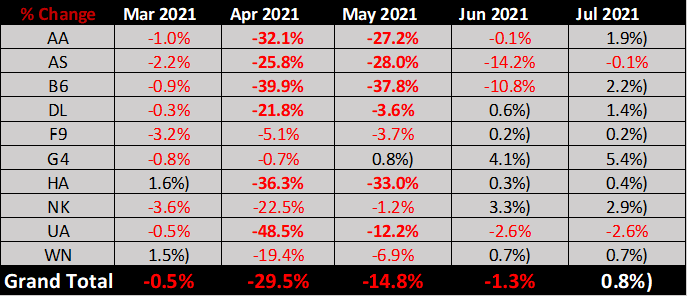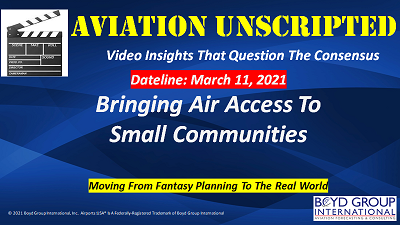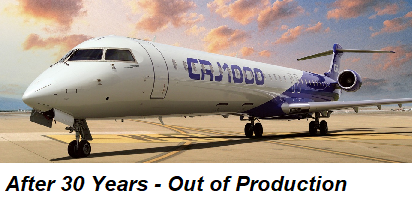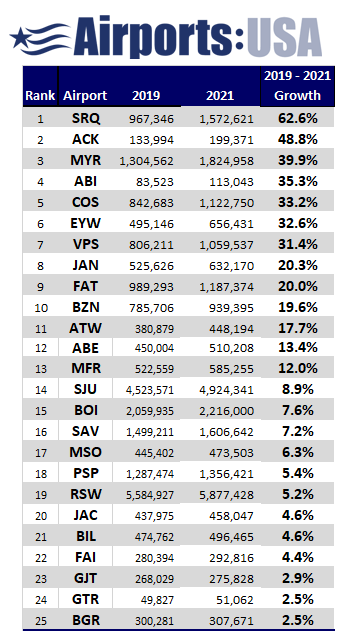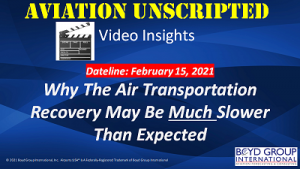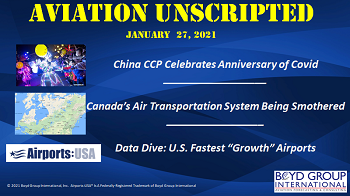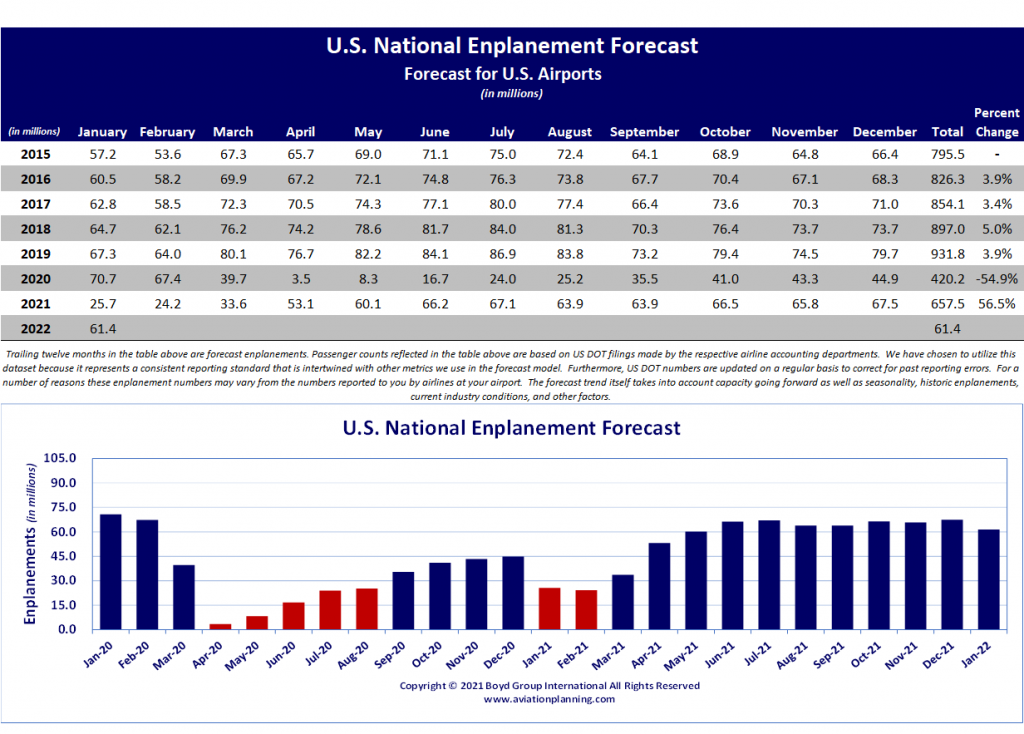The “Average Fare” Fantasy
It’s a quarterly ritual.
The BTS publishes “average fares” for airports across the nation, and summarizes an “average national air fare.”
Then the media stories start, confidently comparing the local “average fares” to the national average, and coming to conclusions regarding how consumers are getting zapped or how they are benefiting from the local average fare being higher or lower than the “national average.”
Hey, it’s gov’met data, so it must be gospel.
Nevertheless, great coverage of something that is totally meaningless.
The “product” – what consumers are buying and represented by air fares- is different at every airport. Therefore, comparing the price of that product between airports is a wallow in nonsense.
The bogus assumption on which these comparisons are made is that an air trip has the same intrinsic value and is exactly the same wherever it takes place, sort of like a gallon of gasoline, or a Big Mac, or a dozen roses. An air travel consumer at Albany is assumed to be buying the same “product” as consumers in Orlando or Yuma or Rochester. Sheer nonsense.
The fact is that the average fare paid in San Antonio is based on air travel that is very different from that at Newark, or Spokane, or Las Vegas. The average length of passenger trip varies. The mix of leisure v business travel varies, the itineraries differ – BTS data is on consumer spend, not necessarily on comparable one-way fares. All of this delivers factors that are different and unique airport to airport.
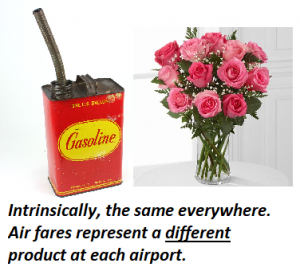 Point: the BTS data is useless in determining the relative value of air travel at one point v another.
Point: the BTS data is useless in determining the relative value of air travel at one point v another.
Airports need to be ready to correct local media when this drivel gets published. These types of veneer-researched stories are very damaging to public image.
This is another reason that raw BTS data is not for amateurs. The reporting processes are in many cases outdated, and are based on an airline industry structure that has changed materially. Plus, there are the amateurs who take raw O&D data, T-100 data, and even on-time data – and assume they came directly from an Excel sheet done by Zeus.
Here’s a hint: In 1997, more than two decades ago, the GAO reported that BTS/DOT O&D data were inaccurate because the reporting system was out of date. Guess how much has been done? Today, when you see some “analyst” post O&D numbers that all end in zero, it’s the leper’s bell of somebody who doesn’t have a clue.
Or, accurate data.
_______________________
Boeing 737 Max Orderbook – Indicator of Future Airline System Structure
Last week, another 93 737 Max orders were cancelled.
Boeing still has just approximately 4,093 Max machines still on the order books – that’s an eight year backlog, assuming 42 coming off the line each month. But this is still a hit – and a forecast indicator that needs to be recognized.
It’s not just the cancellations that give us some insight to the future… it’s who is doing the cancelling. It’s not airlines, but mostly leasing companies. These entities generally order airplanes based on their internal forecasts of future air traffic demand. One thing they don’t want is having any of their inventory “on the ground” a.k.a. unleased. One large leasing company has cut more then 150 Max orders.
The message here is that these companies are seeing a global airline industry that is going to be much smaller than what was seen before the China-CCP virus spread across the globe.
Add to this the projected mix of post-pandemic unplanned retirements in the next 12-18 months – ranging from older narrow-body fleets, to 50-70 seat jets, to older long-haul widebodies – and we can get a clearer picture of the type of air transportation system we will be seeing in the next five years.
A nasty monkey wrench being tossed into traditional air service development planning: it will be airline corporate strategies, based on fleet mix decisions that will be the key determinant of the future airline system.
This is one advantage we bring to our airport consulting and forecasting projects: Boyd Group International maintains its own internal data on airline fleet shifts. This allows us to more closely adjust airport planning to the realities that will be emerging as a result of carrier restructuring.
It’s also a key part of our Runway To The Future programs we are delivering to our clients. We develop specific-factor trend and traffic forecasts that are not based on obsolete government data and methodologies, but instead on the future.
Click here to get a perspective on how we can deliver new perspectives and new planning metrics with a Runway To The Future program.
_____________________
One Year Anniversary of the China-CCP Epidemic
Let’s see… U.S. air travel is down by more than 50% – some places more. Airlines are losing tens of millions a day. Airport revenues are decimated. The entire economy is torpedoed. But the China CCP is celebrating!
Which is not a positive sign on how long this pandemic will continue to be inflicted on the rest of the world.
 January 20 marked one year since the Chinese Communist Party and their toadies at the WHO tossed in the truth towel and told the world that, yeah, they had a major epidemic on their hands. This after weeks of intentionally lying about it and muzzling anyone who came out with facts. Weeks where the virus was spreading across China and to the rest of the globe.
January 20 marked one year since the Chinese Communist Party and their toadies at the WHO tossed in the truth towel and told the world that, yeah, they had a major epidemic on their hands. This after weeks of intentionally lying about it and muzzling anyone who came out with facts. Weeks where the virus was spreading across China and to the rest of the globe.
And now, they’re doing a rerun of the exact propaganda stunts that spread this disease in the first place. In Wuhan, no less. They are holding huge communal events – no social distancing here – to again “prove” there’s no chance of communicating the Covid-19 disease.
That’s exactly what they did last year, and which was the cause of the spread of this plague. Nice folks, the ones running this political party in China.
Standby, we’re covering this in the next Aviation Unscripted video, which we plan to post this week.
Not positive news. Despite sunshine stories, China is not free of the CCP’s viral handiwork. Not by a long shot.
The video is planned to be up by COB tomorrow (January 26).
For access to Aviation Unscripted videos, click here and bookmark it. We are now on Rumble, for several reasons, and in 2021, we’ll be tackling issues that may from time to time not follow the Accepted & Required Narratives.
____________________
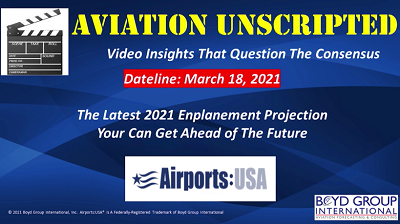 and fast rules. Things change overnight as carriers strategize out of the damage done by the CCP pandemic.
and fast rules. Things change overnight as carriers strategize out of the damage done by the CCP pandemic.